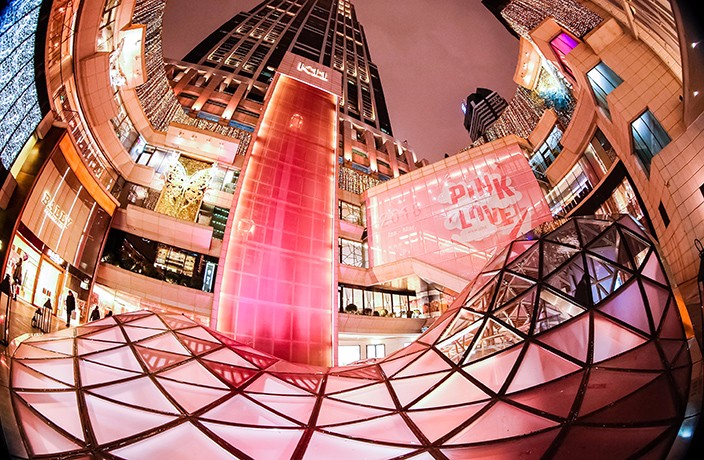Here is a scenario that plays out every day on the world's third busiest subway system: dozens of people queue to go down an escalator, the majority of whom walk down or stand to the right, a small but noticeable minority however, stand on the left, those people deserve to be pushed down the escalator.
The first working escalator was built in 1896. Shanghai has had a subway system full of escalators for two decades. Shanghaiers are not idiots and yet, our government insists on treating us like babies who can't understand how to navigate a moving staircase.
Take this article in government mouthpiece the Shanghai Daily, responding to a (presumably foreign) reader's question about why escalator riders in Shanghai don't follow the near-universally accepted "walk left, stand right" code:
As we all know, “walk left, stand right” is a good rule to adhere to anywhere in the world. Metro passengers have been urged to follow it for years in Shanghai.
But since the end of last year, the city stopped promoting the “walk left, stand right” rule, instead laying the emphasis on holding the handrail when riding an escalator.
The local Metro operator began advocating the practice in November 2006 with posted signs and public announcements at Metro stations. But some subway users said it can be dangerous when fellow passengers walk quickly or run on an escalator. In fact, the city’s bureau of quality and technical supervision reaffirmed the safety concerns. The quality watchdog said the “walk left, stand right” practice was harmful for the balance of the escalators’ parts. The escalators may suddenly break down or suffer damage if people constantly walk or run on them. Furthermore, the steps weren’t made for walking or running, increasing the chance someone might trip and fall.
An escalator is a staircase which moves. If you build a staircase which can't handle being used as a staircase, you've built a pretty terrible staircase. Moreover, the London Underground, the world's oldest subway system, encourages the "walk left, stand right" policy and, this being the UK, people follow it. The London Underground is not plagued by constant escalator failure, nor do people regularly fall through escalator steps weakened by all that walking.
The operator has replaced the signs advising riders to “stand on the right, walk on the left” with ones that remind them to hold on to the handrail, which is safer.
One can only conclude that it is this constant emphasis on holding on to the handrail which generates the absurd trepidation with which many Shanghai residents (mostly old but also fairly young, savvy-to-117-year-old-technology residents) approach boarding an escalator: staring at the steps as if they're moving at a speed unfathomable to our simple ape brains, sticking out a foot like a six year old approaching the edge of a high diving board they're already committed to jumping off.
If you are truly in a hurry it would be safer to use the stairs instead of walking or running on the escalators.
Escalators are safe. You know what are dangerous? Stairs. In the UK in 2011, 693 people died from falls which occurred going up or down stairs. Walking or running on stairs is generally more dangerous than doing so on escalators, as many staircases on the Shanghai Metro are too wide for the majority of users to reach a handrail, and have steps covered in a far more slippy material than the textured metal escalator steps.
Even if it were the case that stairs are safer and quicker to use, this isn't an option in many Shanghai subway stations. At Zhenping Road, the station I pass through every day to and from work, escalators are stationed in up-and-down pairs without a non-moving stair alternative. There are staircases, somewhere, but the idea that they are a quick and easy alternative is fallacious. If a commuter is in a hurry, they take the first available staircase, moving or not. In most stations that will be an escalator because that's how the stations were designed because escalators are quicker.
I won't even get started on the chaos at rush hour when people are forced to queue for the regular staircase, let alone the escalators. Queues which could be greatly relieved if the assholes on the left hand side of the escalators got out of the way.
At present an estimated three percent of Shanghaiers walk on the escalator, those people are heroes, we should follow them to a brighter tomorrow.






















0 User Comments